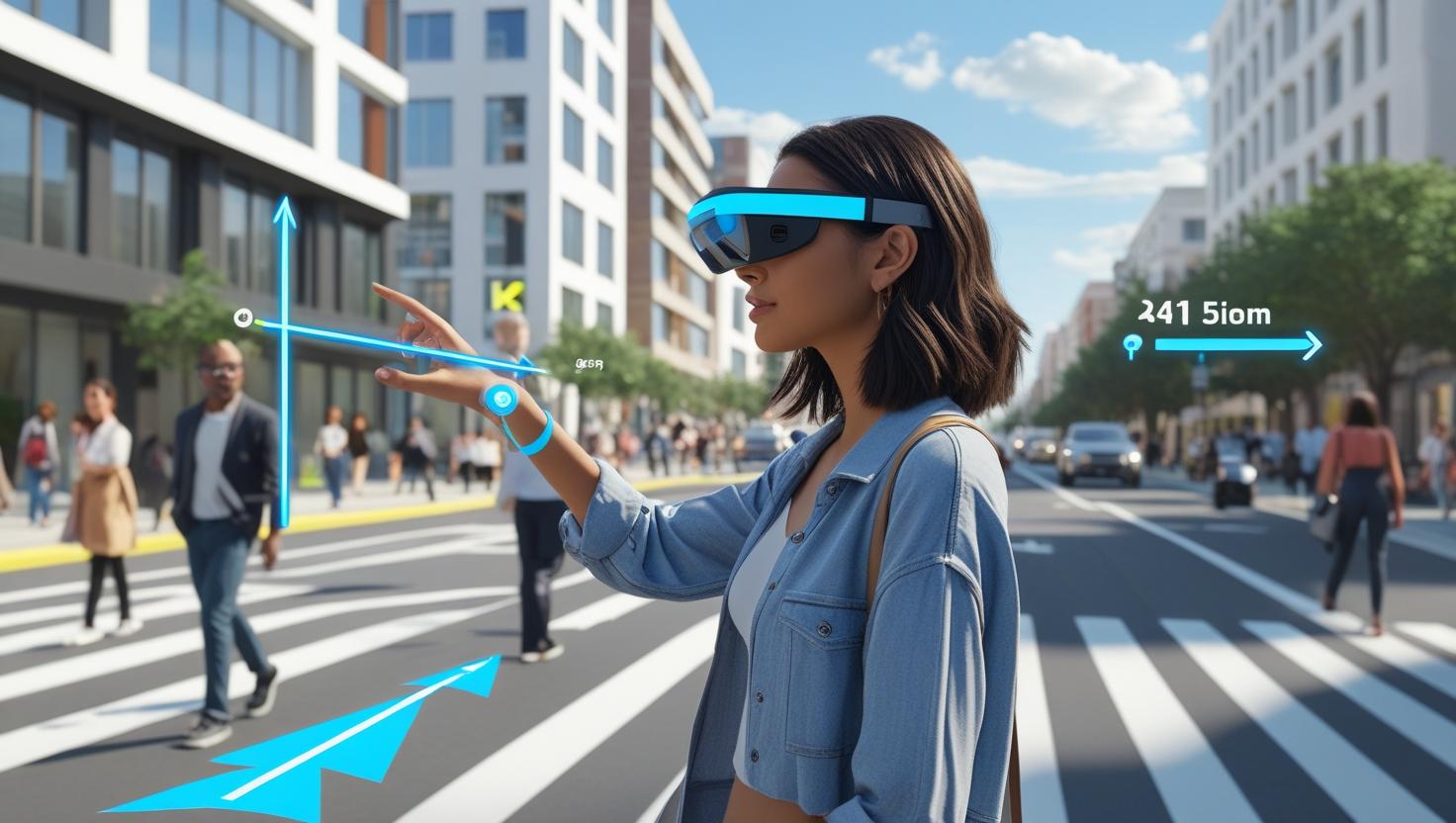The global landscape of Augmented Reality (AR) is evolving rapidly, with location-based AR experiences becoming one of the most transformative applications. As we look toward the period from 2025 to 2029, the AR Location Market is set to expand significantly—driven by AI innovation, 5G infrastructure, edge computing, and growing enterprise adoption.
AR location technology bridges the physical and digital worlds by overlaying spatially accurate digital content onto real-world environments. With AI now deeply integrated into AR pipelines, these systems are becoming not just reactive, but predictive and intelligent. This shift marks a new chapter in how humans interact with their surroundings.
Market Growth and Forecast
The AR Location market is expected to experience strong and sustained growth through 2029, driven by increasing adoption across various industries and rapid advancements in supporting technologies, driven by demand across multiple industries including retail, logistics, tourism, mobility, and public infrastructure. North America and Asia-Pacific will lead adoption, with Europe following closely due to advancements in smart city initiatives and automotive innovation.
This growth is fueled by the increasing availability of AR-ready devices, improvements in GNSS accuracy, and AI-powered platforms that make spatial data more usable, personalized, and actionable.
Download PDF Brochure @
https://www.marketsandmarkets.com/pdfdownloadNew.asp?id=150009689

Key Future Trends in AR Location (2025–2029)
1. AI-Powered Spatial Intelligence
Artificial intelligence is playing a central role in enhancing AR location experiences. AI enables systems to better understand context, predict user intent, and personalize interactions. For instance, AI can analyze user behavior and environmental data to dynamically adjust AR content based on location, time of day, or historical activity.
Computer vision, powered by deep learning, is also enabling real-time recognition of objects, people, and landmarks—turning static AR overlays into responsive, intelligent elements that adapt to their surroundings.
2. The Rise of Spatial Search and Visual Positioning
By 2029, traditional text-based search will be increasingly replaced by spatial search. Instead of typing an address or business name, users will simply point their phone or AR glasses at a location to access contextual information—powered by AI and visual positioning systems (VPS).
Platforms like Google’s AR Live View are already pioneering this shift. In the coming years, VPS technology will become more robust, using AI to match real-world imagery with massive spatial databases to determine precise user location and orientation in real time—even indoors.
3. AR Navigation in Automotive and Mobility
The automotive industry is set to be a major driver of AR location innovation. From heads-up displays (HUDs) with real-time navigation cues to AI-enhanced driver assistance systems, AR will become a core feature in next-gen vehicles.
In public transportation and shared mobility services, AR will help guide passengers through multi-modal transit systems, improving accessibility and efficiency. AI will further optimize routing based on real-time conditions, user behavior, and predictive analytics.
4. Location-Based AR in Retail and Tourism
Retailers are already exploring AR navigation in-store, guiding customers to products and providing dynamic promotions. Between 2025 and 2029, AI-enhanced AR systems will offer hyper-personalized experiences by analyzing shopping habits, in-store behavior, and environmental data.
In tourism, AR will become the standard for interactive guides. Museums, cities, and heritage sites will use AI to generate personalized, multilingual AR narratives, adapting in real-time to user interests and behavior patterns.
5. AI-Generated Spatial Content and Digital Twins
Generative AI is expected to play a key role in the future of AR location, enabling real-time creation of spatial content and dynamic environments. These models can simulate building interiors, historical reconstructions, or future city plans.
Digital twins of entire buildings, cities, or campuses—fed by real-time IoT and geospatial data—will serve as the backbone for industrial and urban AR experiences. AI will process and visualize this data through AR layers, aiding everything from maintenance to emergency response.
6. Privacy, Security, and Ethical Use
With great potential comes responsibility. The AR Location market must address critical challenges around data privacy, user consent, and AI ethics. Tracking user movement and analyzing spatial behavior raises concerns that will require robust regulation, transparent AI models, and privacy-first architectures.
Enterprise and Developer Opportunities
For businesses, the next five years represent a strategic window to integrate AR location into operations. Warehousing, field service, construction, and logistics companies can improve productivity and accuracy using AI-enhanced AR for route optimization, hands-free guidance, and spatial documentation.
Developers will find opportunity in building location-aware AR applications, particularly for mobile and AR wearables. New SDKs and APIs from major platforms will simplify the process of integrating geospatial data, visual positioning, and AI-powered content generation.
Conclusion: A New Era of Contextual Computing
Between 2025 and 2029, AR location technology will evolve from novelty to necessity—redefining how we perceive space, access information, and interact with the physical world. As AI makes these systems smarter, faster, and more responsive, the boundaries between digital and physical will blur.
AR location isn’t just about where you are—it’s about what your environment means, how it reacts, and how it can assist you in real time. With AI leading the charge, the next phase of spatial computing will be context-aware, predictive, and deeply human-centric.
FAQ: AR Location Market Outlook 2025 to 2029
1. What is the AR Location Market?
The AR Location Market refers to the segment of augmented reality (AR) that overlays digital content onto real-world environments based on the user’s geographic location and orientation. This includes AR navigation, geospatial visualization, and context-aware content delivery in sectors such as tourism, retail, logistics, and smart cities.
2. What is driving the growth of AR Location technologies between 2025 and 2029?
Growth is being fueled by advances in 5G, AI, computer vision, and edge computing—along with increased adoption of AR-capable smartphones, glasses, and wearables. Rising demand for immersive navigation, spatial intelligence, and location-based services is also playing a critical role.
3. How does AI impact the AR Location Market?
Artificial intelligence enables smarter AR experiences by analyzing real-time spatial data, predicting user intent, and personalizing digital overlays. AI powers features such as visual positioning, object recognition, dynamic content rendering, and behavior-driven recommendations.
